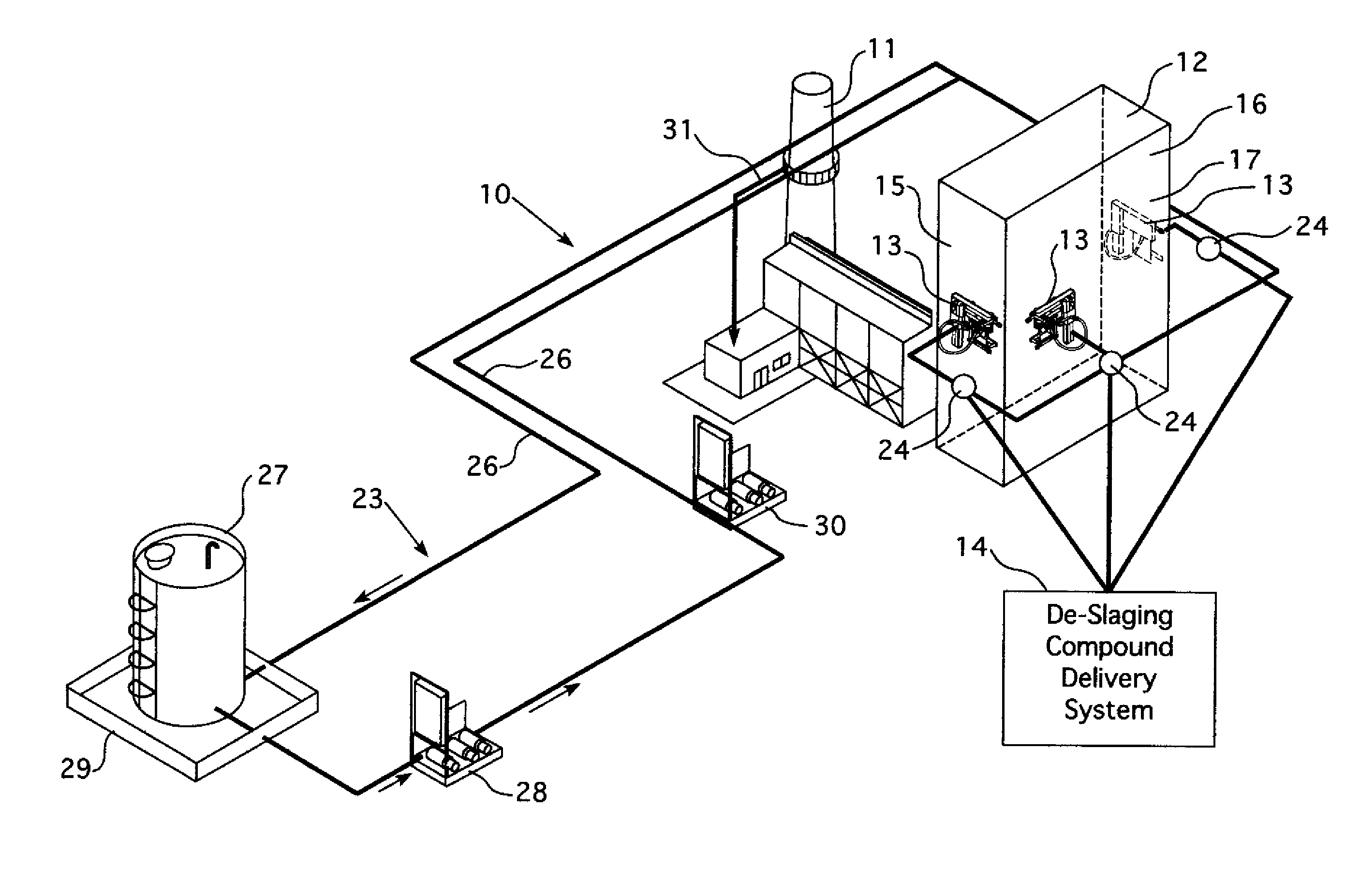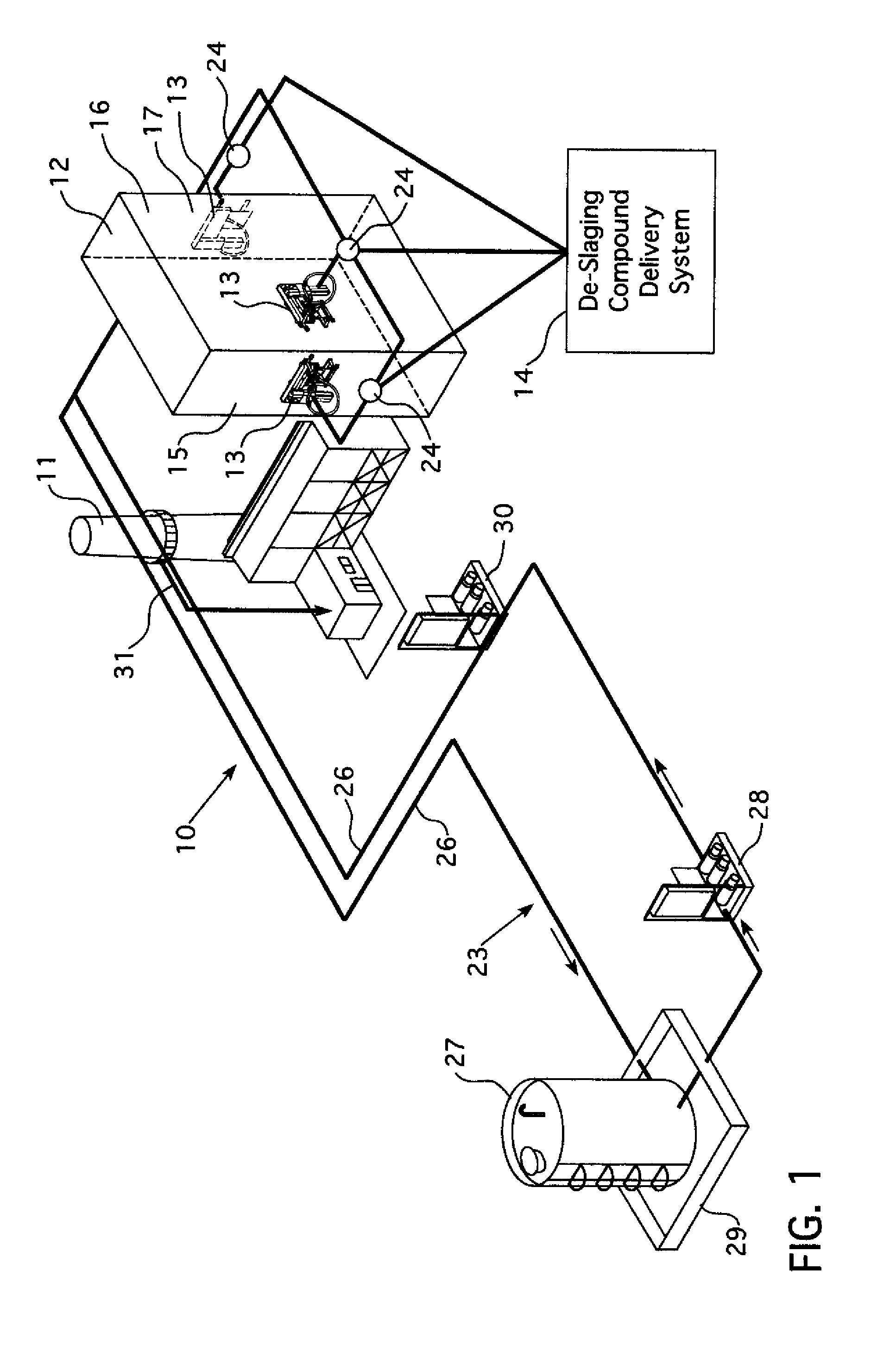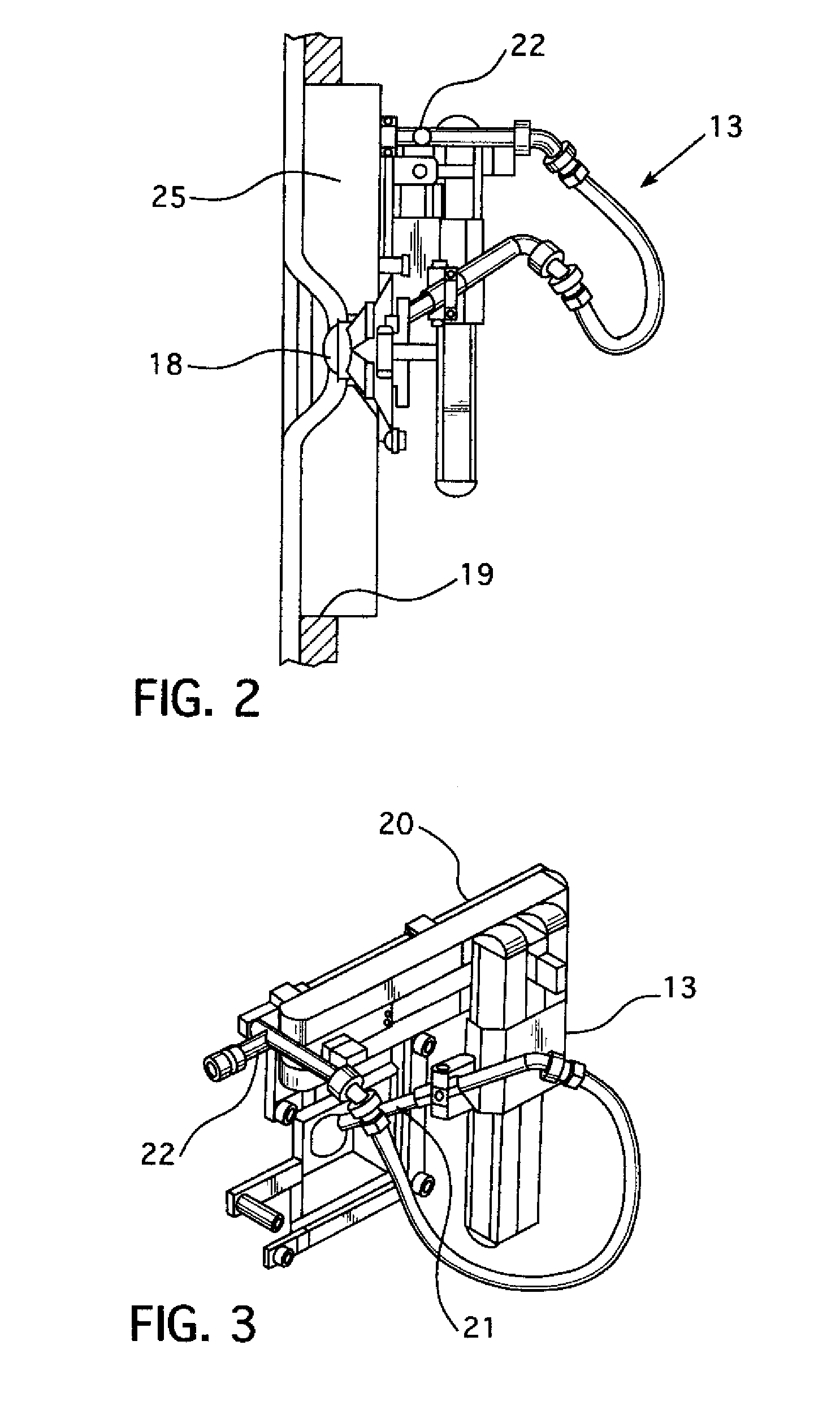Method and apparatus for reduction of pollutants in combustion effluent
a technology of combustion effluent and pollutants, which is applied in the direction of cleaning using liquids, emission prevention, separation processes, etc., can solve the problems of unsuitable and impractical use of water cannons for the delivery of reagents, high cost, and high cost of piping, air or steam, etc., and achieves rapid switching, simple, robust, and cost-effective
- Summary
- Abstract
- Description
- Claims
- Application Information
AI Technical Summary
Benefits of technology
Problems solved by technology
Method used
Image
Examples
Embodiment Construction
[0024]Referring to the drawings, the apparatus 10 of the present invention is illustrated for selective non-catalytic reduction (SNCR) of pollutant emissions in fossil fuel combustion effluent emanating from stack 11 of fossil fuel combustion furnace 12 having articulatable water cannons 13 installed for removing combustion incrustation in the furnace 12. Water cannons 13 are connected to a source of de-slagging compound from a conventional de-slagging compound delivery system 14 under high pressure for injection by water cannons 13 into furnace 12.
[0025]As is better illustrated in FIGS. 2 and 3, the water cannons 13 in this embodiment are provided in walls 15 and 17 of furnace 12. Each of the water cannons 13 includes an adjustable nozzle 18 positioned within wall box 25 mounted in wall port 19 of furnace 13 in order to project a stream of fluid, such as water with a de-slagging compound, into the interior volume of the furnace 13. Nozzle 18 includes a ball pivot joint as illustrat...
PUM
| Property | Measurement | Unit |
|---|---|---|
| velocity | aaaaa | aaaaa |
| exit velocity | aaaaa | aaaaa |
| velocity | aaaaa | aaaaa |
Abstract
Description
Claims
Application Information
 Login to View More
Login to View More - R&D
- Intellectual Property
- Life Sciences
- Materials
- Tech Scout
- Unparalleled Data Quality
- Higher Quality Content
- 60% Fewer Hallucinations
Browse by: Latest US Patents, China's latest patents, Technical Efficacy Thesaurus, Application Domain, Technology Topic, Popular Technical Reports.
© 2025 PatSnap. All rights reserved.Legal|Privacy policy|Modern Slavery Act Transparency Statement|Sitemap|About US| Contact US: help@patsnap.com



